A quick glance at the numbers seems to state the obvious: pre-kindergarten (pre-k) numbers are highest in areas with the highest population. However, a closer look shows in certain circumstances, this is not the case. Rather, the larger issue appears to be the gap that exists between the number of children enrolled in pre-k versus the number of children enrolled in kindergarten.
It should also be noted there are several school districts throughout the region that do not offer pre-kindergarten through the public school district. This occurs not only in the region, but throughout the state because Michigan does not mandate pre-k, despite the positive effects shown by participation in the program.
In this post we examine the number of students enrolled in pre-k classes and kindergarten classes across the region to show where gaps exist.
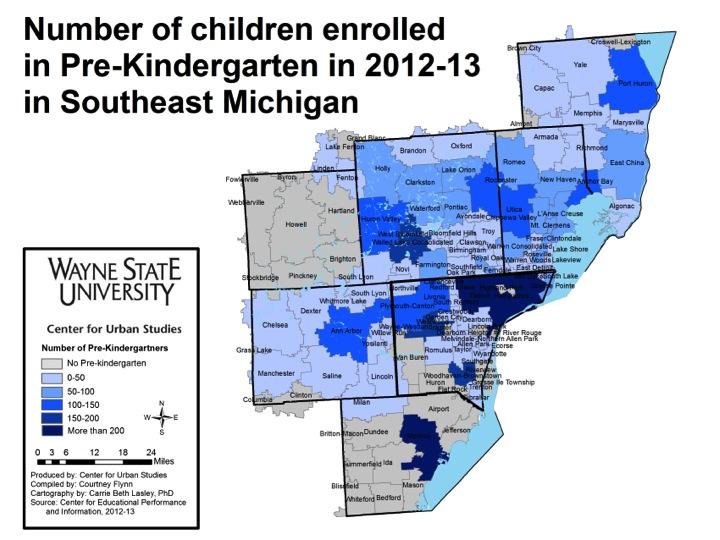
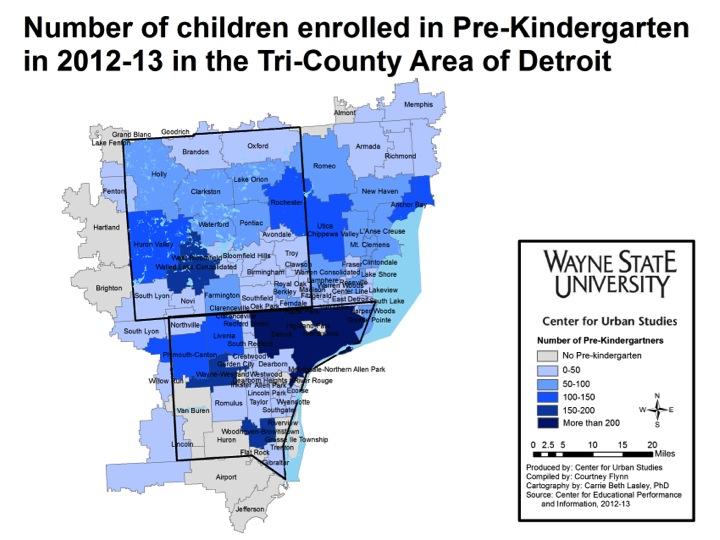
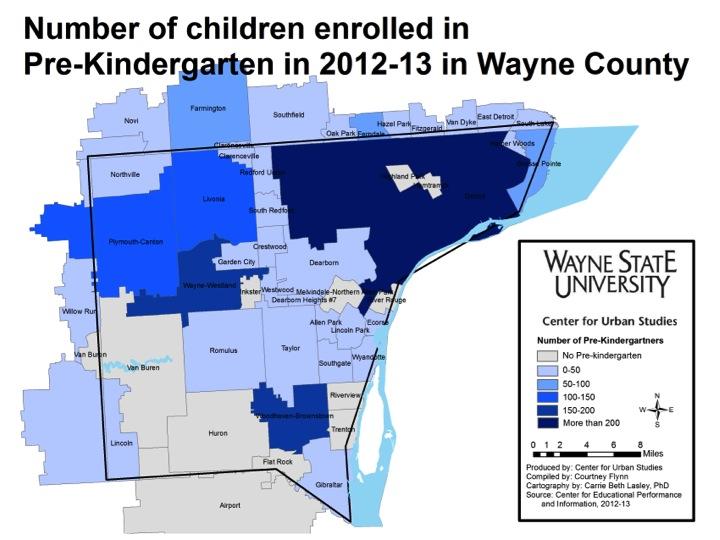
As noted above, there are several districts in the region that do not offer pre-kindergarten classes. The majority of these districts are located in the more rural areas, such as Monroe and Livingston counties. St. Clair County, which is also rural, has low participation in pre-k. The Port Huron and East China school districts are the only districts within St. Clair County with more than 50 children enrolled in pre-k. The Port Huron School District covers both the city of Port Huron and Port Huron Township, while the East China School District welcomes students from Marine City, the city of St. Clair, St. Clair Township, China Township, East China Township and Cottrelleville Township. Even though the East China district covers so many communities, it only had about 25 more children participate in pre-kindergarten than larger single community school districts like Dearborn City Schools. In Dearborn, 30 students were enrolled in pre-kindergarten from 2012-13 and in East China 56 students were enrolled.
The Village of New Haven, which has a smaller population than the City of Dearborn and many of the townships encompassed by the East China School District, had 85 students enrolled in pre-kindergarten. The Great Start Readiness Program, which is a larger feeder for pre-k programs, is based on income eligibility. According to the guidelines, households trying to enroll children in the pre-k through this program need to be at at least 100 percent of the poverty level. This shows why districts such as the New Haven Schools enroll more students per capita than places such as Anchor Bay School District (both are located in Macomb County).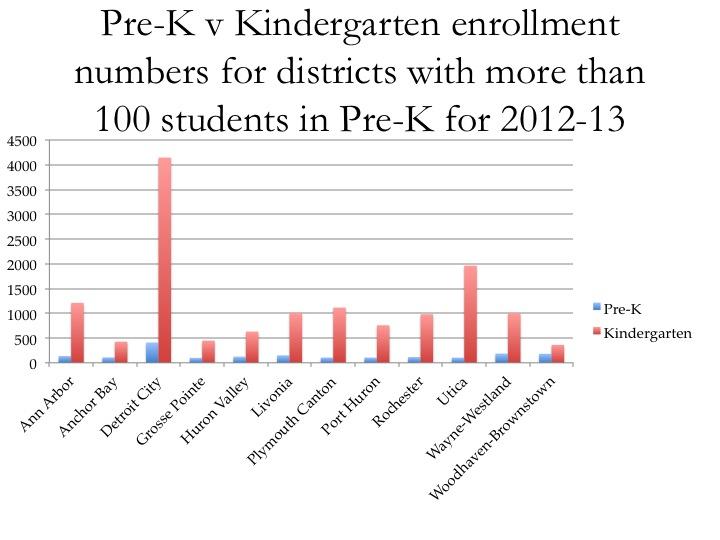
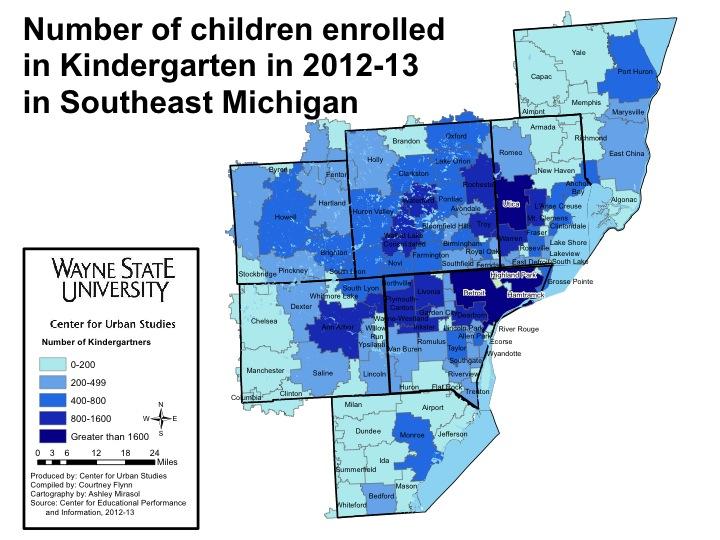
Both the chart and map above show how large the gap is between pre-k and kindergarten enrollment. Even in the Detroit City Public Schools, which had the highest pre-k enrollment in the region at 409, kindergarten enrollment (4,144) was 90 percent higher.
The importance of pre-k enrollment cannot be overstated. Research has shown that it has effects on students’ readiness to learn in elementary school and beyond. According to the Center for Public Education, children who participated in pre-k, rather than being in daycare, scored better on math and reading exams later in life. As noted before, pre-k is not mandated in the State of Michigan.
In 2012, The Bridge Magazine wrote a series of stories for their feature piece “The Forgotten 30,000.” These articles detail the importance of pre-k education and discuss the gap between pre-school and kindergarten attendance. Even with Michigan’s $65 million reinvestment in the Great Start Readiness Program, it is clear that hundreds of children in Southeast Michigan are not receiving the early education that many feel is necessary for greater academic success later in life.